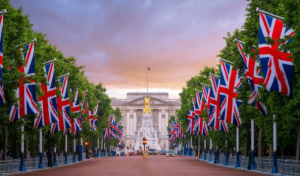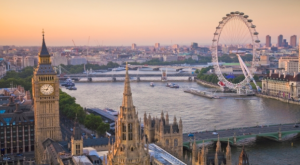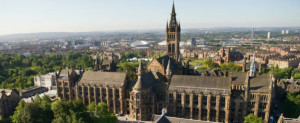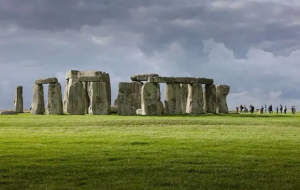General information about Britain
General information about Britain
The United Kingdom is a nation consisting of the countries of England, Wales and Scotland in addition to Northern Ireland, and is known as the birthplace of contemporary parliamentary democracy and the Industrial Revolution.

Britain’s global role declined in the twentieth century after the two world wars, its loss of its empire, on which the sun never sets, and the result of the 2016 referendum on European Union membership raised serious questions about the country’s international role.
Nevertheless, the UK remains an economic and military power to reckon with, with influential political and cultural influence throughout the world.
Tourist places in Britain
Edinburgh
It is the capital of Scotland. It combines the medieval old town and the elegant new town with gardens and classic buildings. Overlooking the city is Edinburgh Castle, home to the Crown Jewels of Scotland and the Stone of Destiny, used for the coronation of Scottish rulers.
There are some important places in Edinburgh that attract visitors to it; Such as: the National Museum of Scotland, which aims to discover the world of nature and Scottish history, and there are many theaters that offer theatrical performances, concerts, operas, and others, in addition to places to attract children such as: Edinburgh Zoo, Deep Sea World, and Georgian Farm City.

Glasgow
It is a port city on the River Clyde in the Western Lowlands of Scotland. It is famous for its Victorian architecture and Art Nouveau, a rich legacy that led to the city’s prosperity from the 18th to the 20th centuries due to trade and shipbuilding. Today it is a national cultural centre, home to institutions including the Scottish Opera, Scottish Ballet and the National Theater of Scotland, as well as renowned museums and ornate music.
There are many areas and landmarks that attract tourists in Glasgow, the most important of which are: the People’s Palace and the Winter Gardens. The museum is historically and socially important, as it embraces the history of the city and the people who lived in it. CCA Center for Contemporary Arts: This center is the site of contemporary arts in Scotland and tourists can enjoy the many art, films, workshops and musical performances of various artists in this center. Gallery of Modern Art: This gallery is located in the heart of Glasgow and hosts cultural programs by local and international artists.

London
The capital of England and the United Kingdom, it is a 21st century city with a history stretching back to Roman times. At its center stands the imposing House of Representatives, the famous ‘Big Ben’ clock tower and Westminster Abbey, the site of the coronations of British queens.
The London Eye observation wheel provides panoramic views of the cultural complex on the south bank, and the entire city, across the Thames.
Royal sites include Buckingham Palace, which houses the king’s main residence and offices, and the Tower of London, a former prison in the home of the Crown Jewels.
Stonehenge
It is considered one of the most famous prehistoric monuments in the world. It was built in several stages: the first monument was a monument, built about 5000 years ago, and the unique stone circle was built in the late Neolithic period around 2500 BC. In the early Bronze Age many mounds were built nearby. Today, along with Avebury, Stonehenge forms the heart of a World Heritage Site.

Big Ben
The clock tower, famous for its accuracy and huge bell. Strictly speaking, the name refers only to the large clock bell, which weighs 15.1 tons (13.7 metric tons), but is usually associated with the entire clock tower at the north end of Parliament House, in London’s Westminster district. The tower itself was officially known as St Stephen’s Tower until 2012, when it was renamed Elizabeth Tower for the Diamond Jubilee of Elizabeth II, when it celebrated the 60th anniversary of the British throne. The clocks are 9 and 14 feet (2.7 and 4.3 meters) tall respectively, and the clock tower is about 320 feet (97.5 meters) high. Originally in coordination with the Royal Greenwich Observatory, the Big Ben tones bell has been broadcast – with some interruptions – since 1924 as the daily time signal from the BBC.
